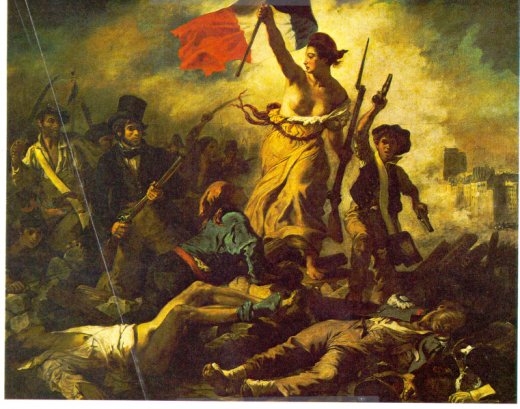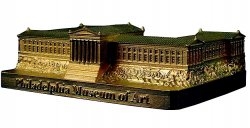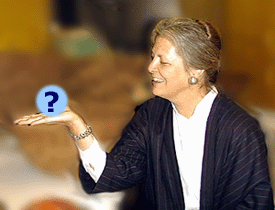
NEW YORK TIMES: By any measure, Anne d’Harnoncourt’s tenure as director of the Philadelphia Museum of Art, cut short by her sudden death on Sunday at 64, was distinguished. It shone forth in major acquisitions, successful  fund drives, vast gallery renovations, a marvelous rehang of the collection and, above all, her refusal to let the museum become a three-ring circus. Having seen the Philadelphia museum — or at least its steps — become a destination after the 1976 film “Rocky,” she did not succumb to showy architecture; the new wing being planned at the time of her death has been designed by Frank Gehry, yet will go underground.
fund drives, vast gallery renovations, a marvelous rehang of the collection and, above all, her refusal to let the museum become a three-ring circus. Having seen the Philadelphia museum — or at least its steps — become a destination after the 1976 film “Rocky,” she did not succumb to showy architecture; the new wing being planned at the time of her death has been designed by Frank Gehry, yet will go underground.
Ms. d’Harnoncourt was a natural museum director in perhaps the best, most basic way. She had the kind of star quality that lights up rooms, but also the confidence to let her curators shine, knowing that their achievements reflected well on her and on the museum she loved so deeply. Her knack for this was grounded in her experience as a curator and as a wife of a curator, Joseph Rishel, senior curator of pre-1900 European painting at the Philadelphia Museum of Art. But it also sprang from her passion for art. It seemed to fuel her great generosity, personal warmth and uncanny ability to communicate with anyone as an equal.
She was born with something of a silver spoon in her mouth, museum-wise. She was the only child of René d’Harnoncourt, who became director of the Museum of Modern Art when Anne was barely 5 and held the post for nearly 20 years. She grew up around art, artists, museums and the fine art of exhibition installation, a discipline at which her father excelled. Yet she succeeded very much on her own. In 1969, during her first real museum job as an curatorial assistant at the Philadelphia Museum of Art, she worked on the installation of Duchamp’s last great work, “Étant Donné,” which had never been on public view before. When she was the Philadelphia museum’s curator of 20th-century art she wrote a catalog essay for the 1973 Duchamp retrospective — organized with Kynaston L. McShine of the Museum of Modern Art — that remains one of the best introductions to Duchamp’s work and personality.
d’Harnoncourt, who became director of the Museum of Modern Art when Anne was barely 5 and held the post for nearly 20 years. She grew up around art, artists, museums and the fine art of exhibition installation, a discipline at which her father excelled. Yet she succeeded very much on her own. In 1969, during her first real museum job as an curatorial assistant at the Philadelphia Museum of Art, she worked on the installation of Duchamp’s last great work, “Étant Donné,” which had never been on public view before. When she was the Philadelphia museum’s curator of 20th-century art she wrote a catalog essay for the 1973 Duchamp retrospective — organized with Kynaston L. McShine of the Museum of Modern Art — that remains one of the best introductions to Duchamp’s work and personality.
But after that, most of her curatorial triumphs were once-removed, carried out by talented curators (sometimes in tandem with other museums) during her 26 years as director: retrospectives of Brancusi, Cézanne, Dalí, Barnett Newman, the Paris couturier Elsa Schiaparelli and the 16th-century Japanese master Hon’ami Koetsu. There were sweeping surveys of 18th-century Rome, Japanese design, Pennsylvania Dutch art, American self-taught artists and the post-conquest art of Latin America. Ms. d’Harnoncourt’s talent as an exhibition enabler may have had much to do with the way she developed from a specialist into a generalist, a necessity for any curator who becomes the director of an encyclopedic museum. She became a discerning enthusiast — and a superb delegator — who loved learning from the curators, soup to nuts, throughout the exhibition process.
The bereft community that Ms. d’Harnoncourt leaves behind was something that she helped forge, based on her innate understanding that there is more than enough art, glory and ultimately, love to go around. Her love of art as a source of essential sustenance was infinite and seemed to extend to anyone who felt the same, or had the potential to feel the same. For her, that meant everyone. MORE
RELATED: What Karen Heller Said
RADIO TIMES: Remembering Anne d’Harnoncourt and her contributions to the art world and Philadelphia cultural life. Marty talks to Philadelphia artist MOE BROOKER, DEREK GILMAN of the Barnes Foundation and independent curator and art historian JUDY STEIN. Listen to this show via Real Audio

 INQUIRER:
INQUIRER: